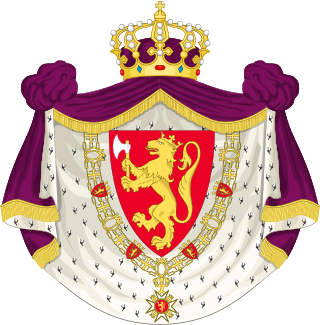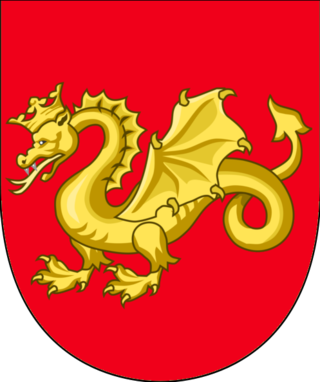| Monarch | Period | Style in Swedish | English translation |
|---|
Gustav I
(1496–1560) |  | 1521–1523 | Jag Gustav Eriksson i Rydboholm utvald Hövitsman över Dalarna, Hälsingland, Gästrikland, Östragötaland och Uppland | I Gustav Eriksson, in Rydboholm elected Headman of Dalarna, Hälsingland, Gästrikland, Östragötaland och Uppland |
| 1523–1528 | Vi Gustav, med Guds Nåde, utvald Sveriges och Götes konung | We Gustav, by the Grace of God elected King of Sweden and of the Goths |
| 1528–1560 | Vi Gustav, med Guds Nåde, Sveriges, Götes och Vendes konung | We Gustav, by the Grace of God, King of Sweden, the Goths and the Wends |
Eric XIV
(1533–1577) |  | 1560–1568 | Vi Erik XIV, med Guds Nåde, Sveriges, Götes och Vendes konung | We Eric XIV, by the Grace of God, King of Sweden, the Goths and the Wends |
John III
(1537–1592) |  | 1568–1581 | Vi Johan III, med Guds Nåde, Sveriges, Götes och Vendes konung, storfurste av Finland, av Karelen, Vetski pjatina och Ingermanland i Ryssland samt över de Ester i Livland hertig | We John III, by the Grace of God, King of Sweden, the Goths and the Wends, Grand Prince of Finland, Duke of Karelia, the Pyatina of the Wods, of Ingria in Russia and of the Estonians of Livonia |
| 1581–1583 | Vi Johan III, med Guds Nåde, Sveriges, Götes och Vendes konung, storfurste av Finland, av Karelen, Sjelonski pjatina och Ingermanland i Ryssland samt över de Ester i Livland hertig | We John III, by the Grace of God, King of Sweden, the Goths and the Wends, Grand Prince of Finland, Duke of Karelia, the Pyatina of Shelon, of Ingria in Russia and of the Estonians of Livonia |
| 1583–1592 | Vi Johan III, med Guds Nåde, Sveriges, Götes och Vendes konung, storfurste av Finland, av Karelen, Vetski pjatina och Ingermanland i Ryssland samt över de Ester i Livland hertig | We John III, by the Grace of God, King of Sweden, the Goths and the Wends, Grand Prince of Finland, Duke of Karelia, the Pyatina of the Wods, of Ingria in Russia and of the Estonians of Livonia |
Sigismund
(1566–1632) |  | 1592–1599 | Vi Sigismund, med Guds Nåde, Sveriges, Götes och Vendes konung, storfurste till Finland, av Karelen, Vetski pjatina och Ingermanland i Ryssland samt över de Ester i Livland hertig; så och konung till Polen, storfurste till Litauen, av Ryssland, Preussen, Masovien, Samogitien, Kiev, Volynien och Livland herre | We Sigismund, by the Grace of God, King of Sweden, the Goths and the Wends, Grand Prince of Finland, Duke of Karelia, the Pyatina of the Wods, Ingria in Russia and of the Estonians of Livonia; King of Poland, Grand Duke of Lithuania, Lord of Russia, Prussia, Mazovia, Samogitia, Kiev, Wolyn and Livonia |
Charles IX
(1550–1611) |  | 1599–1604 | Vi Karl, med Guds Nåde, Sveriges rikes arvfurste och föreståndare, hertig till Södermanland, Närke och Värmland | We Charles, by the Grace of God, Hereditary Prince and Regent of Sweden, Duke of Södermanland, Närke and Värmland |
| 1604–1607 | Vi Karl, med Guds Nåde, Sveriges rikes uträttkorade konung och arvfurste, hertig till Södermanland, Närke och Värmland | We Charles, by the Grace of God, chosen King of the Swedish Realm and Hereditary Prince, Duke of Södermanland, Närke and Värmland |
| 1607–1611 | Vi Karl IX, med Guds Nåde, Sveriges, Götes, Vendes, Finnars, Karelers, de Lapparna i Norrlands, Kajaners och de Ester i Livlands konung | We Charles IX, by the Grace of God, King of Sweden, the Goths, the Wends, the Finns, the Karelians, of the Lapps of the Northern Lands, of the Kajanas and of the Estonians of Livonia |
Gustavus Adolphus
(1594–1632) |  | 1611–1617 | Vi Gustav Adolf, med Guds Nåde, Sveriges, Götes och Vendes utkorade konung och arvfurste, storfurste till Finland, hertig till Estland och Västmanland | We Gustavus Adolphus, by the Grace of God, chosen King and heir of Sweden, the Goths and the Wends, Grand Prince of Finland, Duke of Estonia and Västmanland |
| 1617–1632 | Vi Gustav Adolf, med Guds Nåde, Sveriges, Götes och Vendes konung, storfurste till Finland, hertig uti Estland och Karelen, herre över Ingermanland | We Gustavus Adolphus, by the Grace of God, King of Sweden, the Goths, the Wends, Grand Prince of Finland, Duke of Estonia and Karelia, Lord of Ingria |
Christina
(1626–1689) |  | 1632–1650 | Vi Kristina, med Guds Nåde, Sveriges, Götes och Vendes drottning, storfurstinna till Finland, hertiginna uti Estland och Karelen, fröken över Ingermanland | We Christina, by the Grace of God, Queen of Sweden, the Goths and the Wends, Grand Princess of Finland, Duchess of Estonia and Karelia, Lady of Ingria |
| 1650–1654 | Vi Kristina, med Guds Nåde, Sveriges, Götes och Vendes drottning, storfurstinna till Finland, hertiginna uti Estland, Karelen, Bremen, Verden, Stettin, Pommern, Kassuben och Wenden, furstinna till Rügen, fru över Ingermanland och Wismar | We Christina, by the Grace of God, Queen of Sweden, the Goths and the Wends, Grand Princess of Finland, Duchess of Estonia, Karelia, Bremen, Verden, Stettin, Pomerania, Kashubia and of Wenden, Princess of Rügen, Lady of Ingria and Wismar |
































